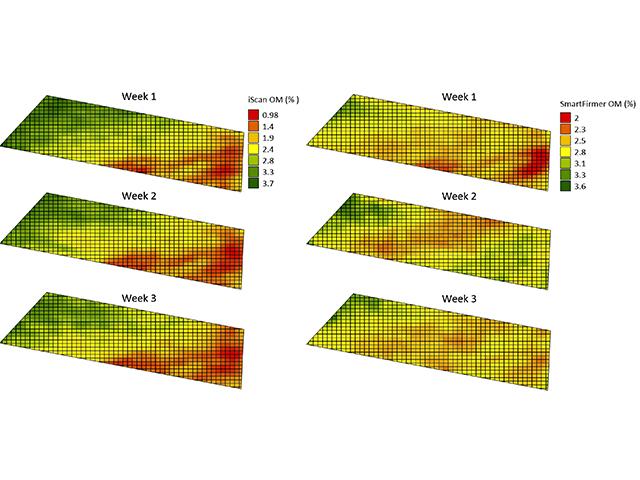Make Sense of Soil-Sensing Tech
Art of Planting - Make Sense of Soil-Sensing Tech
When Newell Kitchen was young, planting corn was admittedly a less-than-exact science. "I remember going out with my dad and planting corn on our small farm," says the USDA research soil scientist. "If we got the seed covered, and it was about 2 inches deep, we were good to go.
"We've learned over a few decades that seed placement matters," he continues, "and today, we have planters laden with all kinds of sensors to help us put those seeds in the best conditions."
Kitchen is a member of the USDA-ARS Cropping Systems and Water Quality Research Unit, based at the University of Missouri (MU). For several years, the team has independently examined on-the-go soil-sensing technology marketed by companies that promise greater yields to growers who use the data to guide planting decisions.
At a recent crop-management conference, Kitchen presented research conducted by the team and MU graduate students assessing the measurements taken using in-furrow sensors and determining how accurately the data collected could predict corn-emergence rates.
"Just because you can sense something doesn't necessarily mean it's useful," Kitchen says. "We have planters with these sensors, but unless they legitimately tell us things that we can use to make agronomic decisions, then it doesn't do any good."
SMARTFIRMER VS. iSCAN
The team evaluated Precision Planting's SmartFirmer seed firmer and Veris Technology's iScan soil-sensing tool. Both products were introduced in 2017 and provide real-time field data for soil moisture, temperature, organic matter and cation exchange capacity. SmartFirmer also generates data assessing residue and soil variation in the furrow.
P[L1] D[0x0] M[300x250] OOP[F] ADUNIT[] T[]
To test the sensors' accuracy, the researchers focused on soil organic matter. Whereas some soil characteristics, such as moisture and temperature, will fluctuate, organic matter is more stable. It's also often used as a basis for variable-rate seeding.
The researchers mapped organic matter content of a field in the Missouri River bottoms with distinct areas of clay loam and sandy soils. Each sensor mapped the field following the same path on the same day, repeating the process three times with about a week between passes.
"We pushed the boundaries of what these sensors tell us by using them on a field that's really contrasting," he says. "If we can't see differences on this kind of a field, we're not going to see it anywhere."
RESEARCH RESULTS
Results showed that the sensors are not created equal. Whereas the iScan unit provided relatively consistent data across all three passes, SmartFirmer data varied.
"We had pretty good rainfall between the first and second passes, and we quickly realized the SmartFirmer sensor was impacted by soil-moisture conditions the day you put it in the ground," Kitchen explains. "Soil organic matter shouldn't change in a three-week period. Maybe three decades, but not three weeks."
He notes that SmartFirmer relies on universal calibration, while iScan is informed by a site-specific calibration based on soil samples.
While accuracy and repeatability were not equal, both sensors did allow spatial variability to be measured. SmartFirmer data also helped accurately predict corn-emergence rates.
"These sensors are good diagnostic tools, and from that standpoint, they are amazingly powerful," adds Kitchen, noting that USDA-ARS does not endorse specific commercial products. "For many growers, that alone justifies having them on their planting equipment."
The research will be published in an upcoming issue of the journal "Precision Agriculture."
**
-- Follow Jason on Twitter @JasonJenkinsDTN
[PF_0223]
(c) Copyright 2023 DTN, LLC. All rights reserved.




